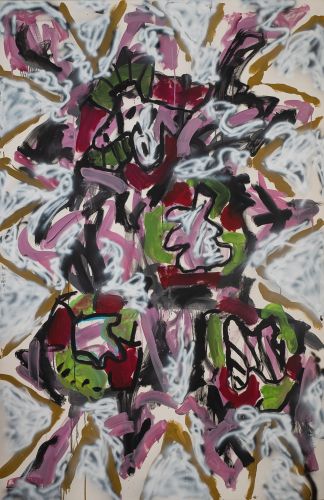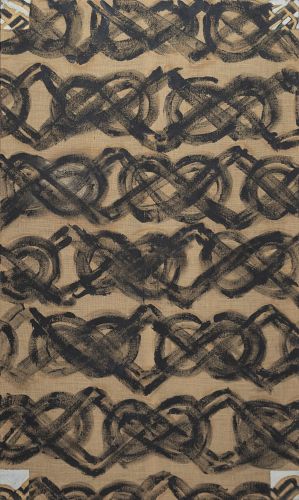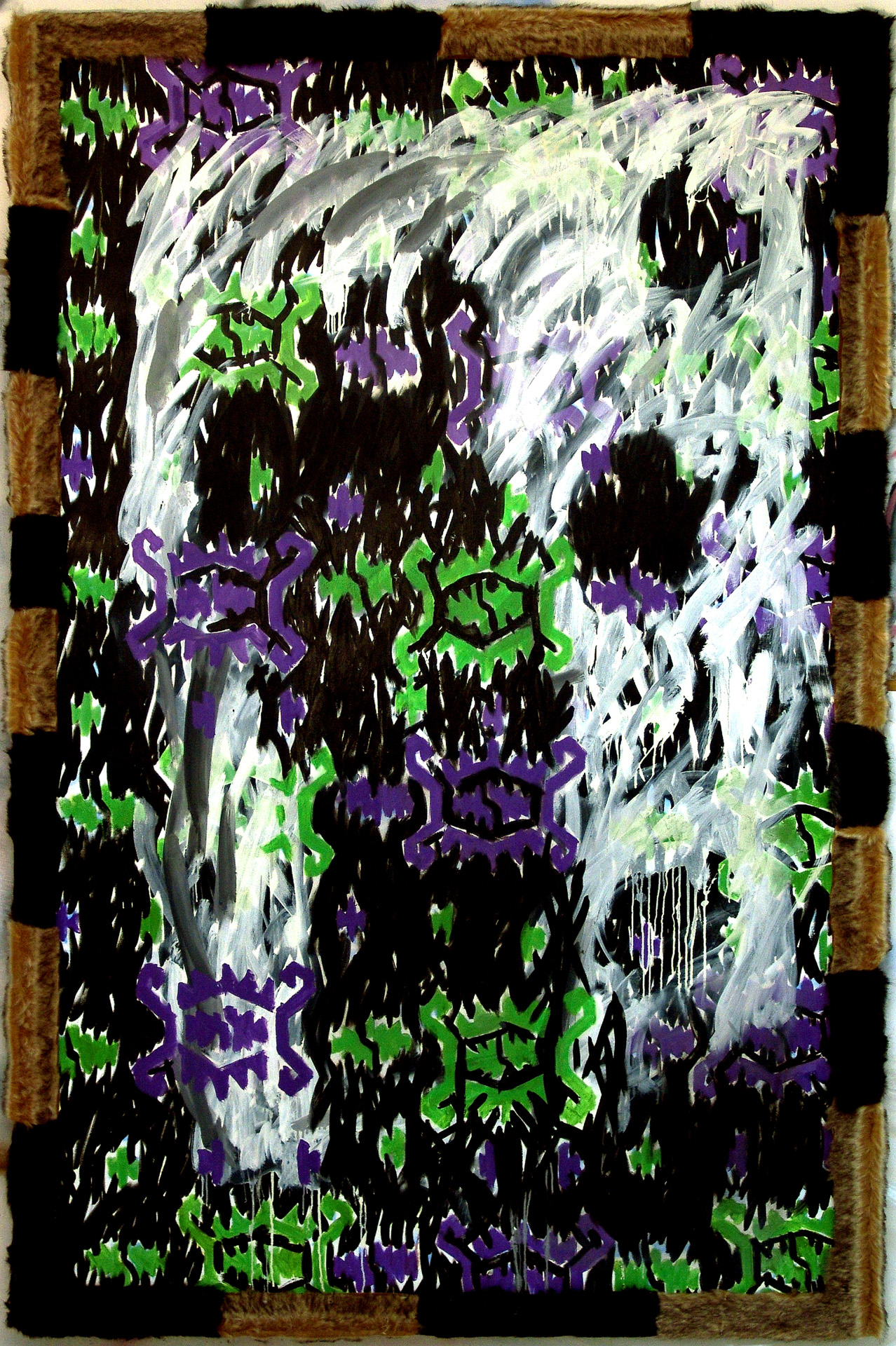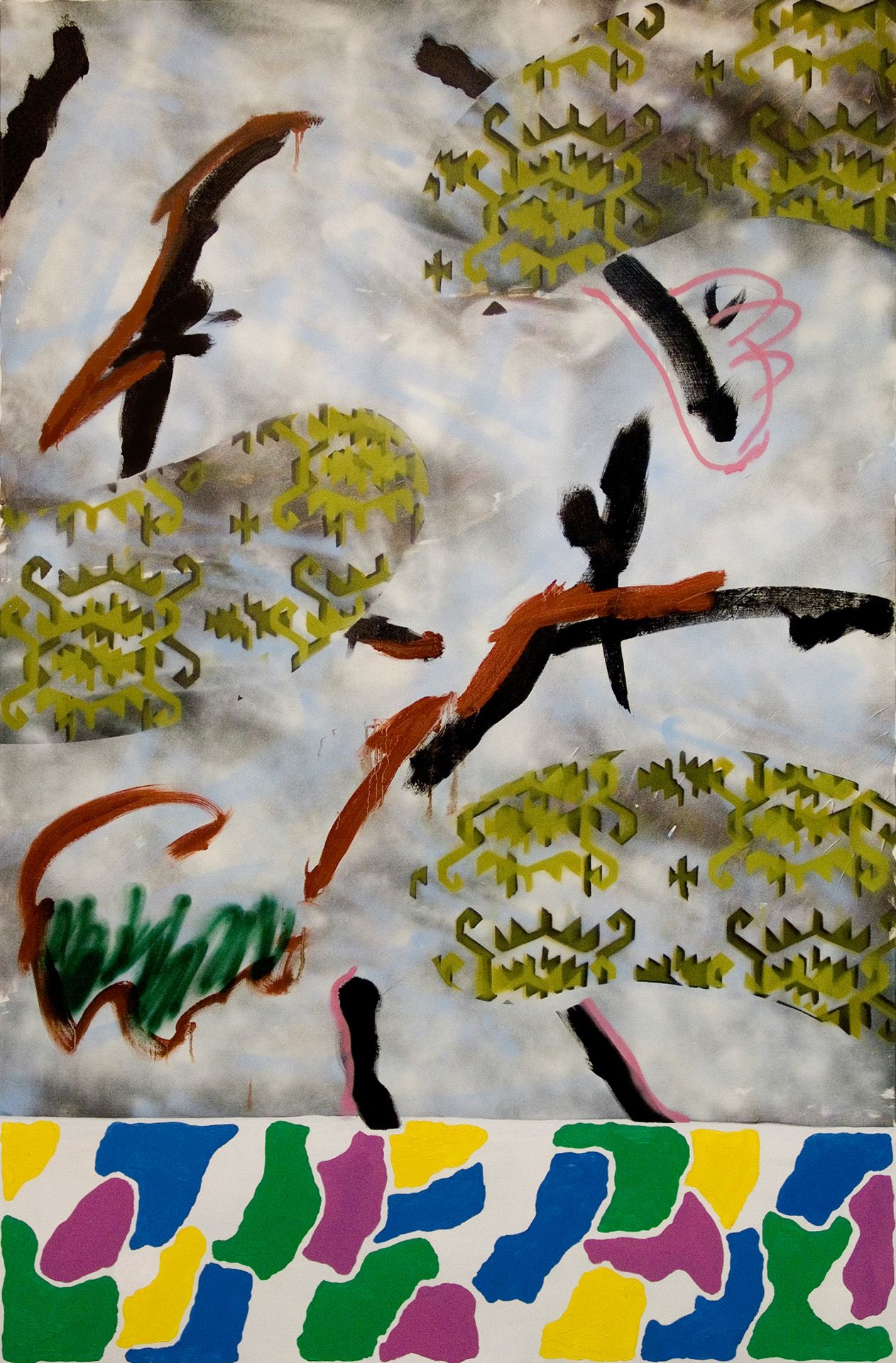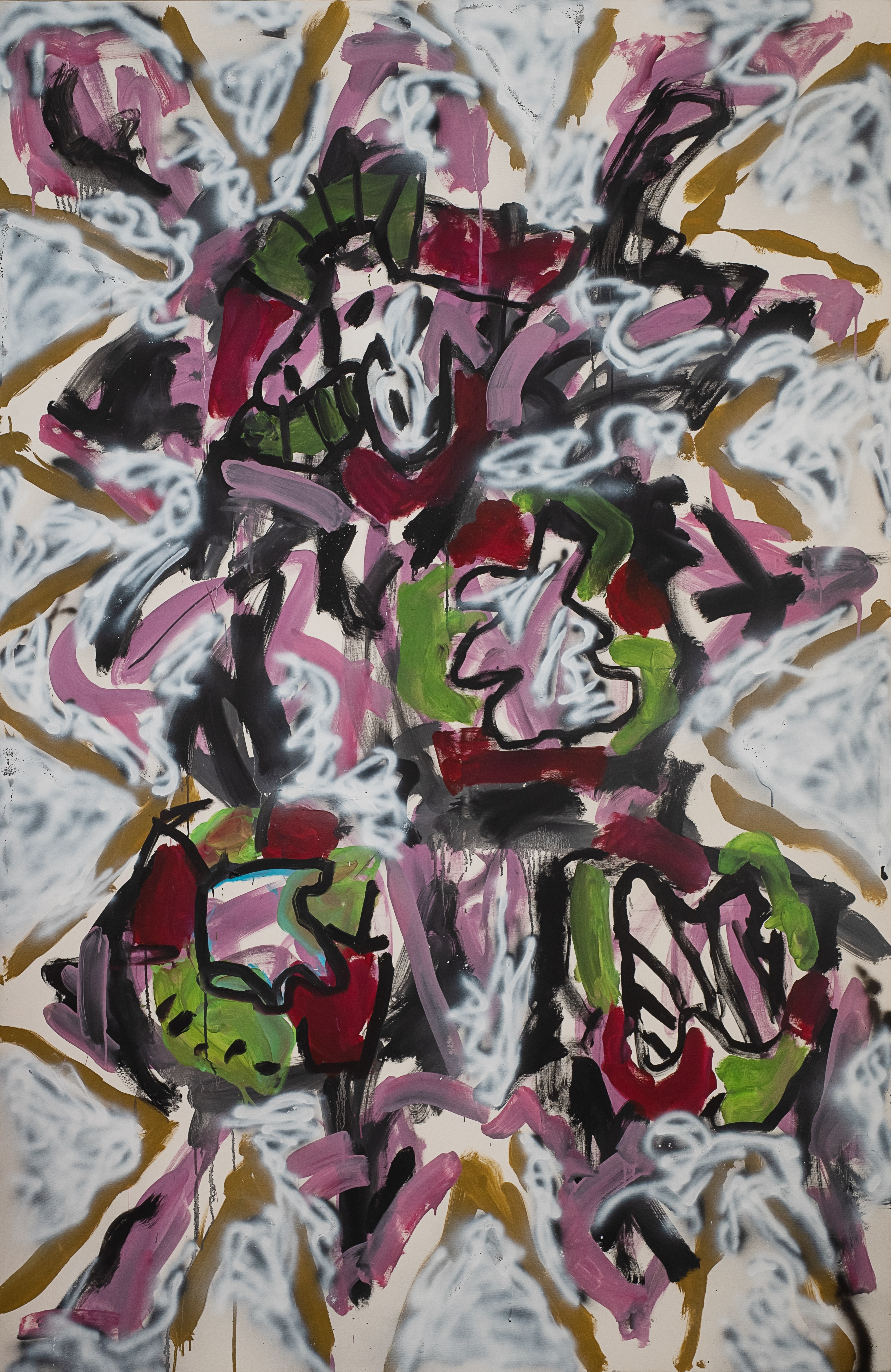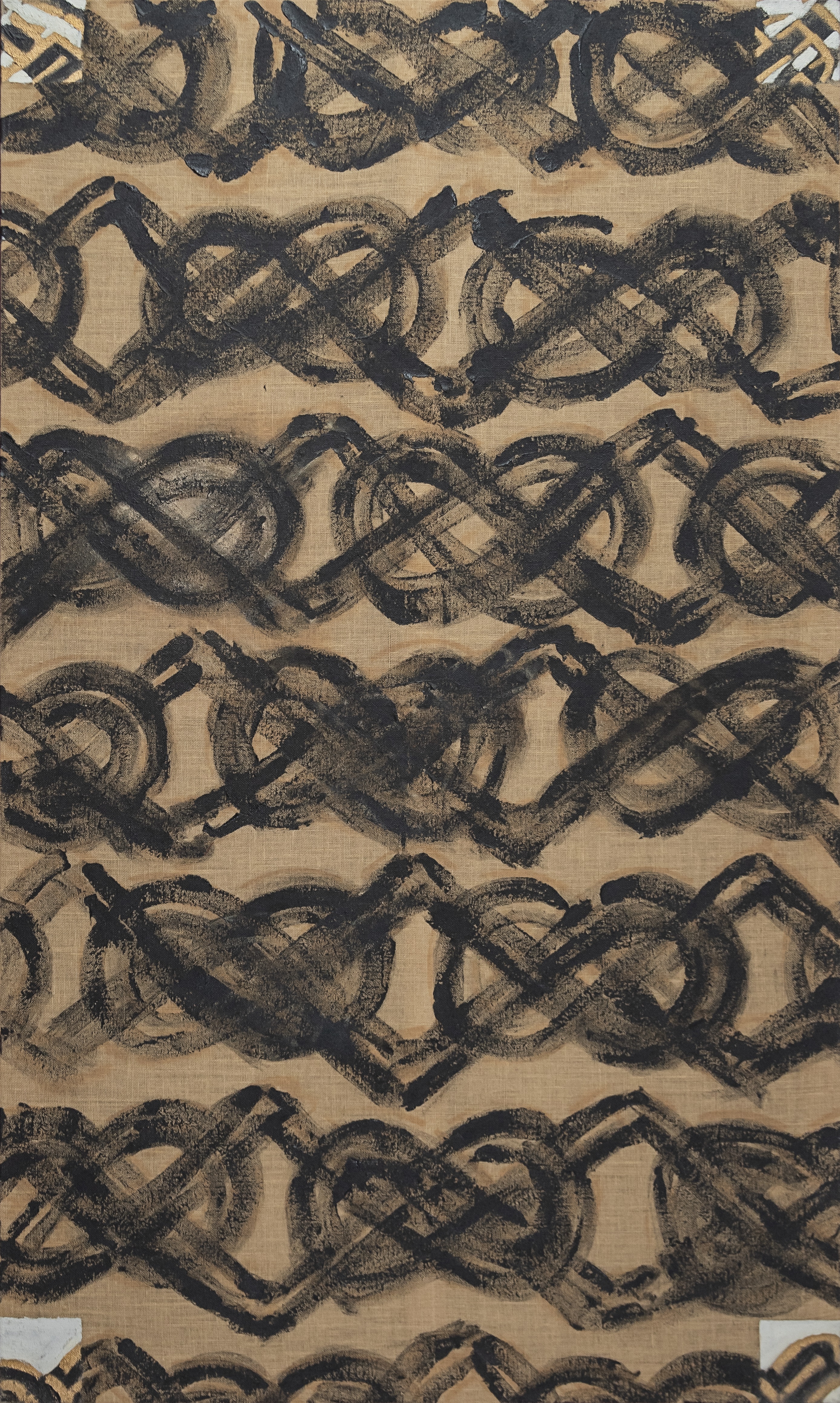Right before I moved back from Paris to Belgrade the work included more mythological and esoteric references as a source of inspiration. I concluded that my paintings were made by using by-products of already existing abstractions. I drew my inspiration from Rüdiger Dahlke’s experiments in perceptual psychology and used painted ornaments as visual stimuli. The idea was that when confronted by a specific ornamental pattern, a spectator projects his/her own subconscious material onto the canvas, thus actively participating in the creation process and adding an archetypal or mythological value to the existing image.









